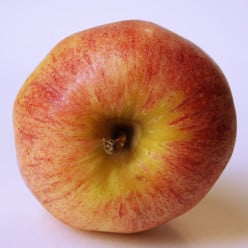Why Are Two Part Articles Not Allowed?
Even mentioning a second part, or saying "to be continued" isn't allowed. Why would this be a problem? If articles, e.g. a travel log, are standalone, why would there be a problem linking them? Wouldn't it encourage people to read the second part and reduce the bounce rate? It's not like it's promoting other websites. Even if it's self-promotion, in the long run it might keep readers on a site and continue navigating it to read more.
Set them up as individual articles, one that focuses on a day's locale for your travel log, then day two locale , and use the links capsule to join them together.
Even make a 3rd (or 5th) article that has all of the locales and activities for a week or 10 day trip and then have each locale listed as an individual hub in the linbks tab called Recommended for You:.
Given that we only get paid for one impression of the myriad ads displayed , I would think that shorter articles with 5-7 ads would be better for you than an article with 33 ads in it. Save your shot to spread it around.
Standalone articles make far more sense on a site that relies mainly on traffic from search engines.
I've written math articles as two part guides and said this is part one and this is part two and mutually refer to one from the other. I'm still not sure what a multiple part guide actually is though. Like it's not as if one stops abruptly midway through sentence. I mentioned "to be continued" at the end of the travel guide, but the editor took that out.
I would have a master guide. How to plan a trip to Tuscany - for a 3, 5 or 2 weeks visit.
In that I would list the must go to locations, then if you have more days, list the next 3 best locations and so on. And link over to the locations in each section with a full days travel guide for each city. What we did , what to avoid, what is a good value for your money in museums etc.. would we go there again? "Two days in Florence - the good, the bad and the ugly."
So each one is a standalone, and fits with the master article which told you where to stay to best visit other cities/miracles in the region.There is a lot of food for thought for me in these comments. I often set out with good intentions of keeping an article compact, but then it keeps on growing. I am currently working on a mammoth one.
I once split a visit to Prague up by area and wrote several different articles. Likewise I split Amsterdam into different topics. I am now intrigued to work out their combined views compared to a bigger all-encompassing article.
I guess I work on the basis that, as a tourist, I would like to find all the information in one place, I.e. within the same article.I just chopped a physics article into two smaller ones. It was originally one article written years ago but it was much too long. I carved a bit off it before, so now it has become three articles in total. What's left more closely resembles the title. It wasn't affected by recent traffic drops in September, so just like you, I'm interested to see whether traffic will drop because I've removed content.
Doing what Solaras suggests and having a web of related standalone articles can be good, I believe. But having multi-parters isn't a good idea.
Part of the problem is keywords. In the web idea, they are different but overlapping and effectively bolster each other in a variety of ways. In a multi-parter, there is too much similarity.
The keywords thing is at the core of SEO. Adding or removing content is a factor, but far less important, in my view.When I talked about two parts, what I was really considering was two parts on a related topic rather than only partially providing the information in one part and then the remainder in a second part. So for instance I wrote two articles about calculus. Originally they were called something like "What is Calculus? Limits and Differentiation" and the other part was called "What is Calculus? Integration". (I had to change the titles later because of the Google Site Diversity thing, that restricts multiple results in SERPS from the same site, but that's another story). In one way they're two parts under the broad topic of calculus, but on the other hand they can be considered standalone articles.
Related Discussions
- 19
Why can't articles be part of a series?
by Tamarajo 4 years ago
I love the Hubpages writing community and the easy formatting that Hubpages provides. I am also grateful to be able to present the writing topics I love and share them with others with similar interests. However, I have encountered a couple of issues in the last couple of years that I would like to...
- 16
Articles that Build on each Other- 3 Part Article
by Abby Slutsky 5 years ago
I have seen someone write a two part article here (Two articles that built on each other on the subject matter.), but it was not recent. I did not know if I could do that or if it was currently frowned upon. It would not be able to cover the entire process in one article. Is that something...
- 15
How do I get my first article out?
by Fresh Trends 3 years ago
I did an article and the score rose to 62, but then fell to 58 within a day. If you know anything as to how to reach 80. I am following the instructions closely for the article. If anyone can provide any tips, it might help.
- 26
Finally, I have seen the answer to what our earnings are based on
by Barbara Fitzgerald 3 years ago
Okay - It seems there was an update to the definition of our earnings. I cannot say when it occurred.Basically we are paid for pageviews. One payment per view of article, regardless of how many ads are delivered to the reader, unless they back out before the first ad is actually viewed. Then we...
- 19
Zujava no longer useful to promote Hubs
by Kate Swanson 12 years ago
I always recommend Hubbers to write at several rev-sharing sites for two reasons: one, not to put all your eggs in one basket and two, so you can create an interconnected web of articles across the internet to increase your profile as a writer (which will do you far more good than a big body...
- 16
I don't think this should have ad revenue disabled, am I wrong?
by Kyler J Falk 4 years ago
As far as I can tell, this article's ad revenue doesn't need to be disabled because it does not fall outside of the standards for receiving ad revenue. It would seem some of the language is triggering the automatic features. I could be completely wrong, though. Second opinion? Objective input from...









